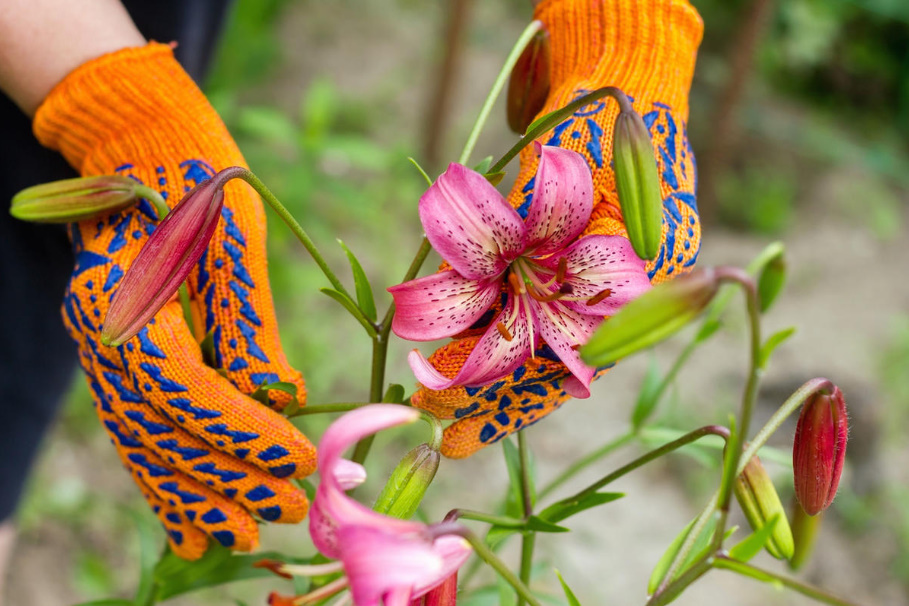In the middle of summer, we admire the blooming lilies, and when they fade, we wonder how to take care of the plants so that next year the flowering will be even more abundant, even longer.
To be honest, I myself don’t do anything special with lilies after flowering, and I think I won’t reveal any secrets with this article. But I know that flower growers, especially beginners, often have questions — I will try to answer them.
When to trim the flower stalks of lilies?
Lilies are bulbous plants. And in order for the bulb to grow and accumulate nutrients, the aboveground part of the plant involved in photosynthesis is necessary. If it is removed ahead of time, the bulb, of course, will not die, but it will be worse prepared for winter, and it will have much less strength to bloom in the new season.
Therefore, we do not remove the peduncle with leaves, but when the lily flowers wither, we need to cut off the upper part of the stem with the seed pods forming. If this is not done, the plant will expend energy on the formation of seeds, and our goal, as you remember, is the nutrition of the bulb.
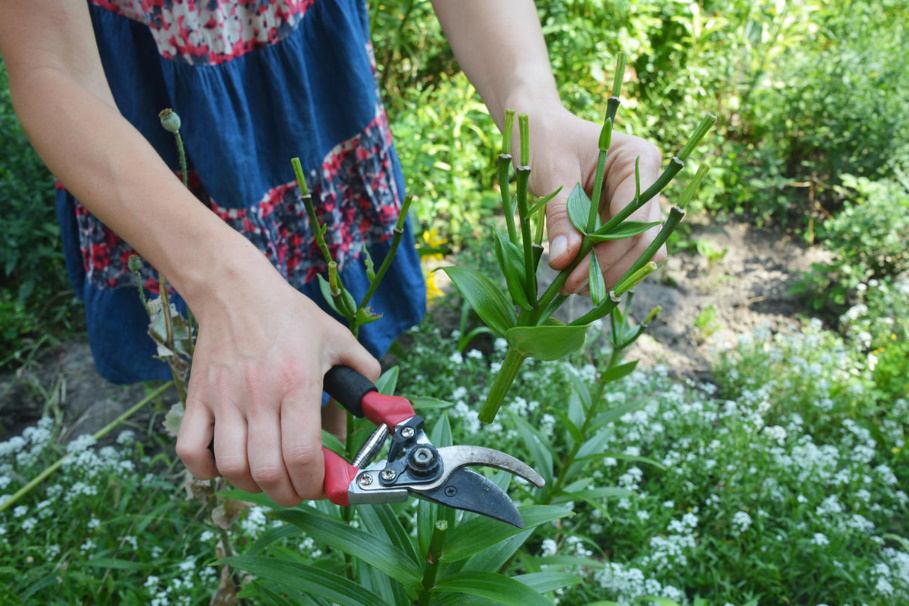
What happens if such pruning is not carried out? In general, it’s okay. The bulb will not die for sure. But most likely, it will turn out smaller — which means that next year it will bloom worse than it could if we carried out this simple procedure. And daughter bulbs are formed faster if the plant is not given an alternative reproduction option.
We leave the rest of the stem until autumn — we will cut it off when we see that the leaves wither and turn yellow. In principle, the lily stems that have served their time are easily removed completely, and in autumn, while cleaning the garden, they can be removed (carefully unscrew, do not pull, so as not to accidentally pull out the bulb). And you can leave the “stumps” about 10 cm high, so that you don’t forget about your plantings until spring (I think many will agree: this also happens).
When can lilies be divided and transplanted?
Strictly speaking, lilies can be transplanted at any time, even in bloom. Therefore, the question is rather not when it is possible to do it, but when it is better to do it. The answer is simple: when the plants go into a state of rest — at this time, the transplant will not disrupt any important processes, which means it will not affect the development of lilies and their subsequent flowering.
The state of rest, depending on the species and varietal affiliation of lilies and the peculiarities of the local climate, occurs in the second half of August — early September. It is very easy to determine that the time has come: by the withering of the aboveground part of the plant.
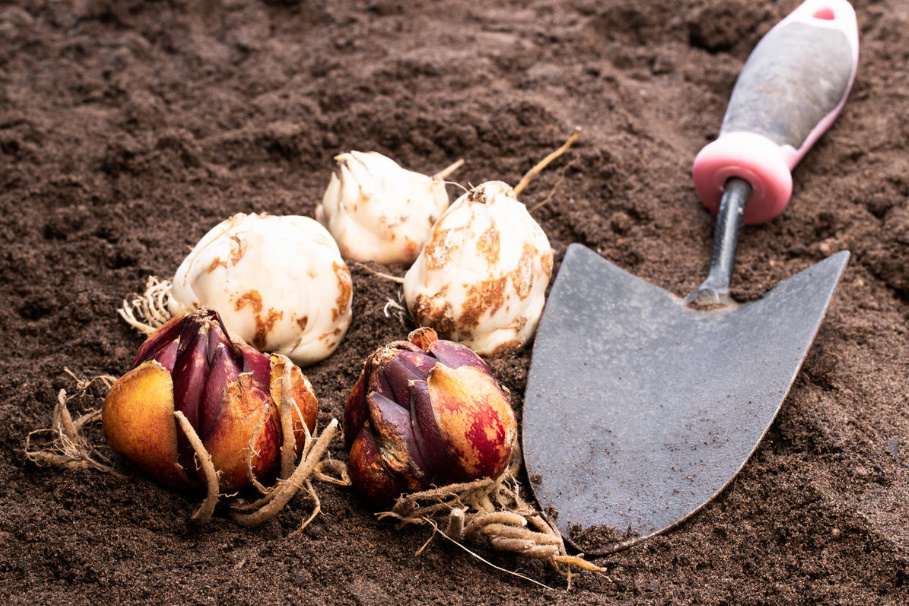
Annual digging of most lilies is not required (the exception is thermophilic species in cold climates), so we carry out this procedure exclusively “according to indications”:
- the nest has grown a lot (it is necessary to dig out and divide, otherwise the bulbs will become smaller, the risk of diseases will increase in tightness);
- the plants showed signs of disease (it is necessary to dig up to carry out processing, and transplant to stop the development of the disease);
- the lily was planted unsuccessfully (mistakes happen to everyone, and it is better to correct them in a timely manner);
- we want to propagate the plant we like (sometimes it’s not necessary to wait for the kids to grow up — you can dig out the bulb and use its scales);
- lily is thermophilic (for example, oriental hybrids), and we want to guarantee its preservation (sometimes such plants overwinter in the ground).
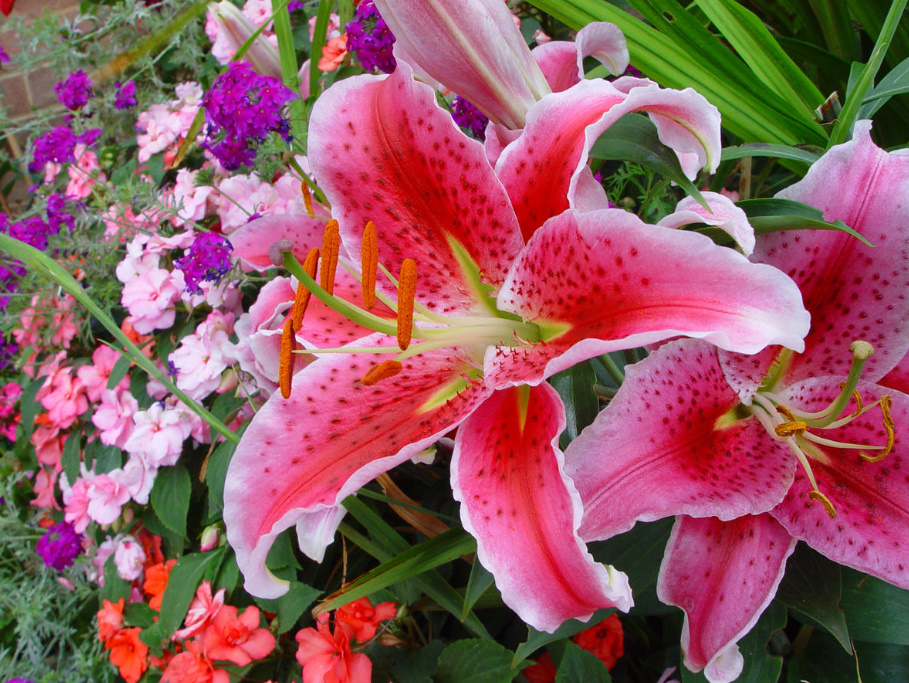
It is better not to store the excavated lilies, but immediately plant them in a new place — so they will have time to take root before frost and will bloom well next season. Bulbs of thermophilic species are stored in a moist substrate (peat, sawdust, moss, etc.) in cool conditions (most often in the refrigerator). Be sure to make holes in the bag for ventilation and check the planting material regularly: is it dry, is there any mold.
Do I need to water lilies after flowering?
The answer to this question mostly depends on the weather. Well, from the soil to some extent. If the ground in the flower beds has dried up, of course, you need to water the plants: the stems and leaves need moisture so that they do not wither prematurely. And as you remember, the future of the bulb also depends on the well-being of the aboveground part of the plant, so you should not torment lilies with drought, even if they have already faded.
On the other hand, August is rarely dry: heavy night dews and regular rains do not allow the soil to dry out. Therefore, purely practical watering of lilies at this time is usually not required.
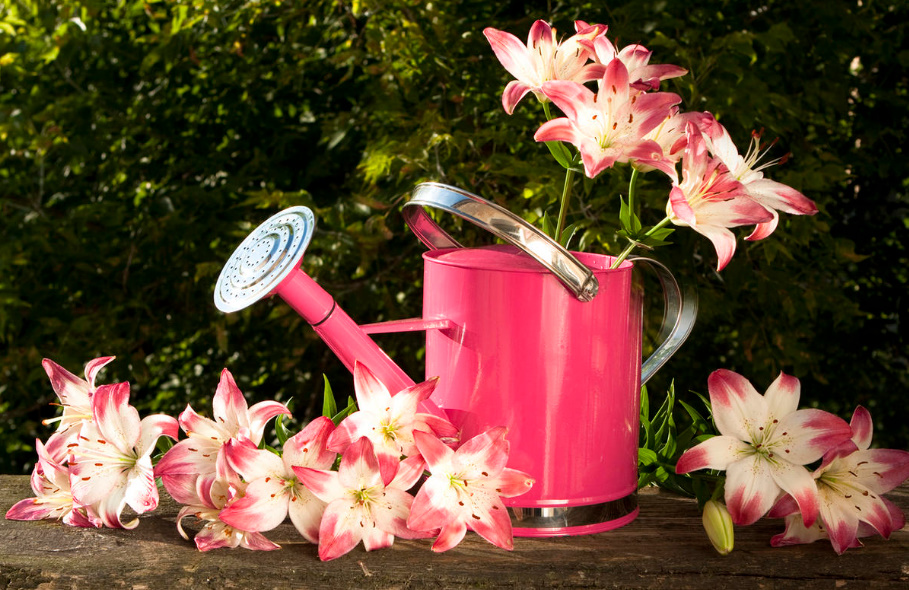
If the soil in your garden is dense, moisture-intensive, especially with watering, you should not be zealous: the temperature decreases by the end of summer, and excessive humidity will easily provoke rot or disease. If you grow your garden on sandy and sandy loam soils that dry out easily and quickly, moderate watering (according to the weather) can benefit the plants.
What kind of top dressing do lilies need after flowering?
To help the bulb gain strength, prepare for wintering and lay a good foundation for flowering in the new season, use potash and phosphorus fertilizers. The ideal solution is specialized complex formulations for bulbous plants, balanced according to the needs of plants.

Do not use fertilizers with a high nitrogen content at this time — they stimulate growth and inhibit the maturation of the bulb. Top Dressing should be applied no later than August — before the aboveground part of the plant withers. When the lilies go into a state of rest, fertilizing is impractical: nutrients are practically not absorbed at this time.
How to prepare lilies for winter?
Winter-hardy species and varieties of lilies do not need any special preparation for winter — they perfectly survive the cold under the snow cover. Additionally, you can only mulch the soil and spread out brushwood for snow retention.
The main difficulties are usually associated not with the winter cold, but with a prolonged warm autumn, provoking premature awakening of the bulbs.
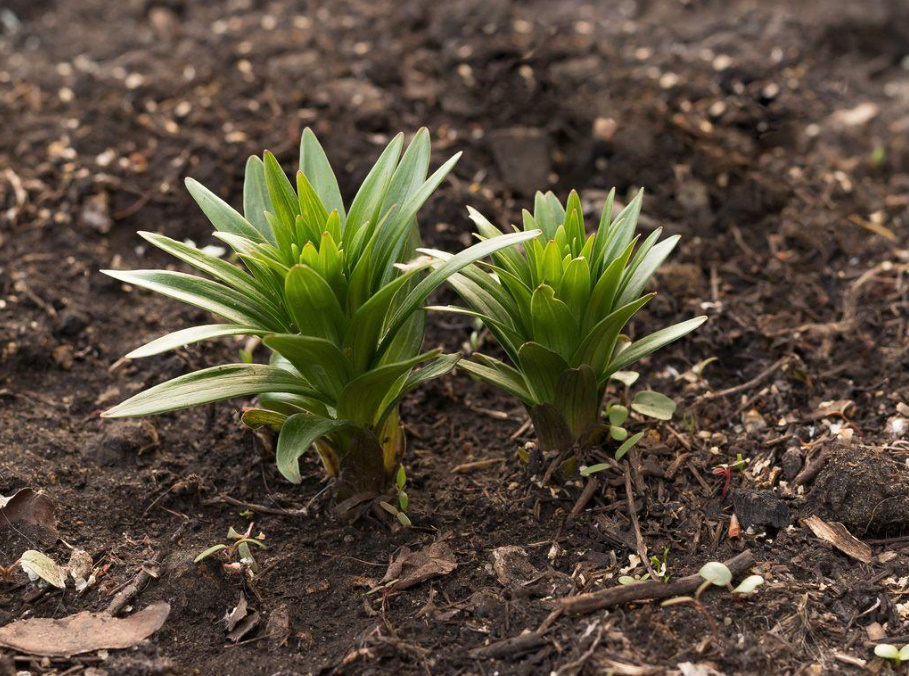
However, I hasten to reassure you: such a premature awakening usually does not cause serious damage to a healthy, strong bulb — unless the flowering next summer may be somewhat weakened. A much more serious problem is rodents, capable of destroying lily plantings in the hungry and cold winter season.
If we are talking about heat-loving lilies, I would not rely on shelters and protection. Yes, often such plants can winter in a cool climate. They winter for a year, two… But one day in the spring, you probably won’t find them — and you’ll probably be upset. For unstable wintering species, the best way to prepare for winter is digging and cleaning for storage.
Here, perhaps, are all the features of caring for lilies after flowering. And how do you do it? If you also love lilies, be sure to tell us in the comments about your experience of caring for them!
